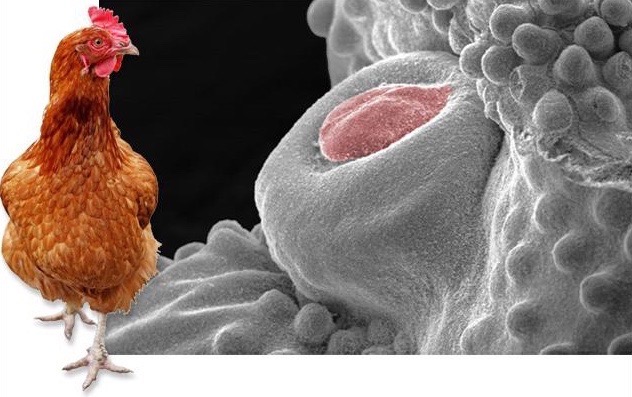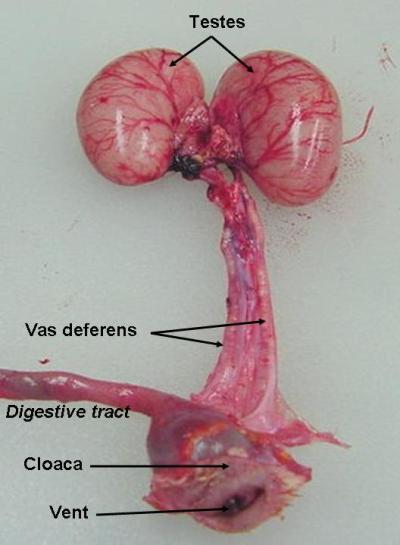When I was in grade 8 I checked out the book “Everything You Wanted To Know About Sex, But Were Afraid To Ask” from my junior high school library. Long before the advent of the internet, it was a surreptitious way us teenagers could get the low down without asking our parents.
Every once in a while I scan my blog stats to track the number of visitors and views, what countries people come from and what posts they read. I recently started to check out the ‘search term’ history thinking that might give me a clue as to what folks might be interested in. To my surprise, various terms related to chicken sex were pretty high on the list. I’ve written a series of posts on chicken anatomy (feathers, digestive, respiratory, and nervous system) including one on chicken reproduction. It’s got the scoop on how your birds have sex, including pictures.
I thought I’d do a shorter follow-up for those inquiring minds wanting to know even more about chicken sex. Today’s lesson is on roosters.
Rooster Penis
First of all, it might surprise you that roosters – despite being called cocks in many countries – actually don’t have one. Yup, that’s right. 97% of bird species lack a penis. Farmers have known that little nugget for ages, but scientists have recently discovered how bird penises disappeared. Rooster genitals start to develop in vitro, but eight or nine days into the embryo’s development are affected by a protein that promotes cell death. It triggers the cells in the rudimentary penis to die faster than they grow back, eventually leaving only a slight bulge. Researchers now know that that phenomenon is linked to the switching on of a gene called Bmp4, but don’t know why.

The few species that don’t have Bmp4 – ostriches, emus, ducks and geese – all have a penis.
If you keep ducks you might have noticed that your drake’s penis, and a funky one at that. Their penis is tucked neatly in an internal sack and during sex ejects outside the body. An erect penis can reach 20cm/8″, or a whopping 42cm/16.5″ in the case of the Argentine Lake Duck. If that wasn’t interesting enough, a duck penis is corkscrew-shaped, with ridges and backward pointing fleshy spines.
Female ducks have corresponding long, corkscrew-shaped vaginas. Duck sex can be pretty aggressive so they’ve also got some tricks hidden up their figurative sleeve: they have dead-end pockets that they can use if they don’t want to be fertilized by the drake they are mating with.
Just a note for folks that keep chickens and ducks together: drakes aren’t always very fussy who they mate with. If it happens to be a hen she can be injured, or even killed, by that weaponized duck penis.
Rooster Testicles
It seems that roosters got short-changed in the penis department, but their testicles fare a bit better. They’ve got two bean-shaped testes located against their backbone in front of the kidneys. Rooster testicles vary in size based on their age and time of year. If you butcher a rooster in the winter his testicles will be smaller than during the spring mating season, when they swell up considerably.
In most birds the right testes is smaller than the left one to decrease overall body weight enabling flight. Since chickens haven’t adapted to fly both their testicles are the same size.

Sperm carries half of the total chromosomes required to produce an embryo. The hen provides the other half with the ova. One cubic millimetre of chicken semen contains on average 3-5 million sperm with pointed heads and long tails. Just like with humans, roosters mate less often as they age and the quality and quantity of their sperm declines.
Testicles also produce androgens, male hormones that influence the development of secondary sex characteristics such as size (body, comb and wattles), hackle and sickle feathers, behaviour and mating.
Caponizing is the removal of a cockerel’s testicles. Without the presence of testosterone, cockerels grow larger, fatter and are more tender when butchered. We’re not taking about a very pretty or painless procedure. A bird between the age of 3 – 12 weeks is restrained with his wings and feet pinned to prevent movement and expose his rib cage. The caponizer then cuts between the lowest two ribs and spreads them apart to open up his abdomen. The testes are ripped free of their connective tissue with a small slotted spoon.
As you can imagine it’s easy to screw up, especially for those first starting out. It’s also easy to only partially remove them, or nick an artery or kidney leading to infection or death. Incisions aren’t sutured, and the entire process is done without anesthetic or antibiotics. There are all kinds of online how-to posts on how to caponize cockerels. I would strongly advise against at-home surgery to castrate cockerels just so they make better eating when butchered.
So there you have it: a little insight into rooster genitals. Hopefully I have answered a few more of your questions about chicken sex. If not, feel free to ask away and I’ll find the answers.
Featured Photo Credit: Geoff Hansen




This is great! We should all learn more about chicken sex 😂
LikeLiked by 1 person
wtf
LikeLiked by 1 person
Wow. Just wow! Nature is fascinating as is sex!
LikeLiked by 1 person
yes
LikeLiked by 1 person
Another great article, it’s crazy anyone would ever want to castrate their birds!! I was curious why my rooster was only mounting them for a second and then was done, this explained that question for me.
LikeLiked by 1 person
stop exposing me!
LikeLiked by 2 people
😂😂😂
LikeLiked by 1 person
What is the little white thing in the egg? It’s usually close to the yolk?
LikeLiked by 1 person
It’s called a chalaza. It’s made of tightly wound albumin and is designed to hold the developing embryo centred in the egg. Type ‘how an egg is made’ in the search box on my home page and you’ll see my post on the different parts of the egg.
LikeLike
Chickens are very complex creatures, but every time i see them (every day) I know that they’ll be the same ol’silly geese , or hens, that make my day
LikeLiked by 1 person
You should thank Isaac Butterfield for the publicity of your website. He talked about your website on September 21st, 2020. He’s the one that gave you the two new comments. I believe so anyway.
LikeLiked by 1 person
I don’t know who he is or what his talk was about, but I do appreciate word-of-mouth recommendations. Thanks for the feedback.
LikeLike
Conducting surgery to an animal without anesthesia needs to be animal abuse! Who the f would castrate an animal like that? Doesn’t matter the species, no excuse for abuse! Evil people! May God punish the wickedness towards these innocent animals, they don’t deserve to be treated so horribly.
LikeLiked by 1 person
I also want to say this is well written and informative but that part about how some castrate the roosters is so horrible, I was shocked! Such atrocious deeds need to be made illegal, no creature deserve such pain! And it’s so unnecessary, just for greed! There really is evil in this world with so much abuse towards innocent animals, it only reflects what kind of person they are. Anyone who gets a jolly out of harming animals or/and children are never to be trusted and should be locked away forever.
LikeLiked by 1 person
Very well written and informative
LikeLiked by 1 person
Thanks i have learnt a lot
LikeLiked by 1 person
Ooof. Have just read about a farming family in the 1950s on Pabay, and castrating the cockerels was a job done by the children. I googled the process, as I’d never heard of it before/couldn’t work out where the testes are located. Brutal stuff… Very informative post, thanks. I particularly liked the bit about female ducks having ‘dead end’ pockets!
LikeLiked by 1 person
You can imagine at-home surgery without anesthetic or pain management. It is brutal.
LikeLike
I’m so glad I decided to go with chickens vs. ducks…..
LikeLiked by 1 person
This was so educational for me.
LikeLiked by 1 person
Me and my friend Maeve who cosplays as a chicken at the weekend found this information really helpful. We will be presenting this to our classmates who will hopefully share our interest in these beautiful animals. Thank you!
LikeLiked by 1 person
I’d love to know what a cosplay chicken looks like. Can you send me a photo? Drop me a line by using the ‘contact’ button on my homepage and I’ll give you my email. Thanks!
LikeLike
interesting
LikeLiked by 1 person